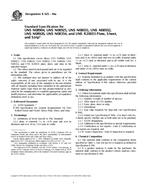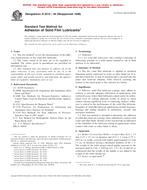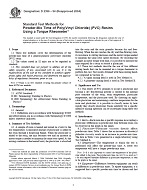1.1 This guide provides appropriate sensory testing approaches and possible decision criteria for establishing sensory shelf life of consumer products. It describes research considerations including: product selection and handling, appropriate application of various sensory test methods, selection of test intervals, and data analysis techniques for the determination of a products shelf life end-point. As such, this document covers shelf life studies designed to identify the sensory end-point of a products life to manage business risk and meet business needs. This guide will focus on the practical considerations and approaches, risks, and criteria that must be considered in designing, executing, and interpreting shelf life results.
1.2 Sensory shelf life is the time period during which the products sensory characteristics and performance are as intended by the manufacturer. The product is consumable or usable during this period, providing the end-user with the intended sensory characteristics, performance, and benefits. After this period, however, the product has characteristics or attributes that are not as intended, or it does not perform the same functions as fresh products or those selected before the end of shelf life.
1.3 The goal of all shelf life determination is to estimate the time at which a consumer product is no longer usable, unfit for consumption, or no longer has the intended sensory characteristics. The determination of a sensory end-point is a function of the criteria selected, the test method used, and sampling risk. The three following test methods are most commonly used: (1) discrimination, (2) descriptive, and (3) affective. Researchers have to select criteria and methods that best suit the business risks associated with the selection of a final shelf life end point.
1.4 Research techniques designed to identify the causes of sensory shelf life changes or to develop predictive models of shelf life are beyond the scope of this document. These include the application of regression analysis to develop statistical models designed to predict sensory shelf life, studies that assess the impact of various storage conditions, packaging materials, or product formulations on the shelf life of products, and studies designed to identify the causes of changes in product attributes over time. However, many of the research methods, experimental design considerations, and data analysis techniques discussed in this document can be applied to these other types of shelf life-related research.
1.5 This guide is not intended to provide a detailed description of how to conduct reliable sensory testing. It assumes knowledge of basic sensory and statistical analysis techniques, focusing instead on special considerations for the specific application of sensory testing method to shelf life determination.
Product Details
- Published:
- 11/15/2005
- Number of Pages:
- 9
- File Size:
- 1 file , 230 KB


